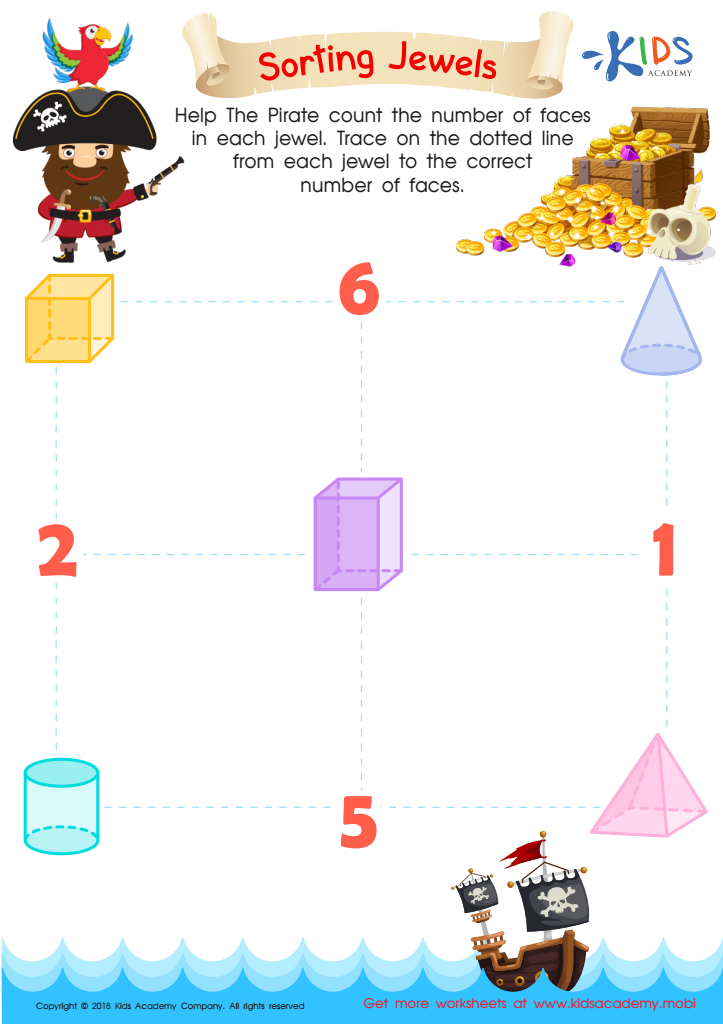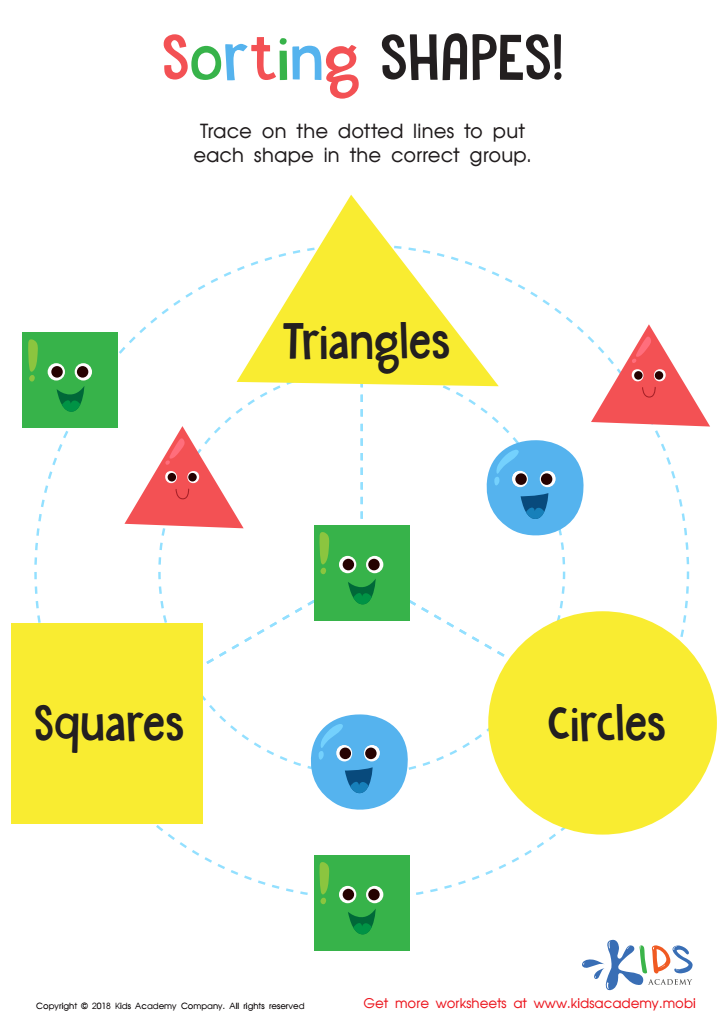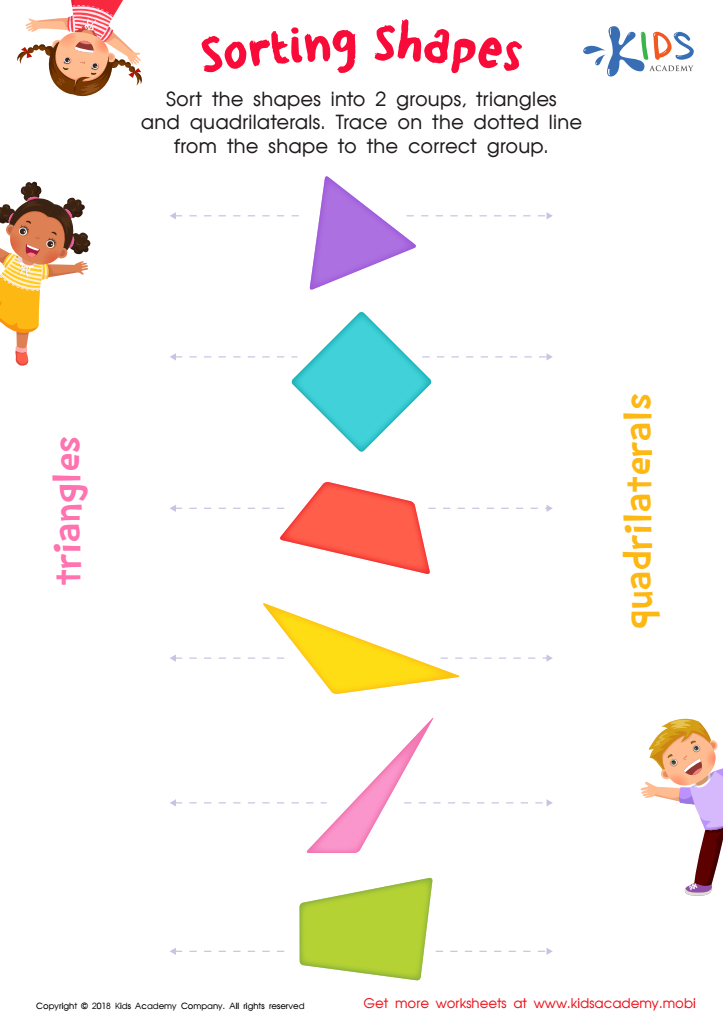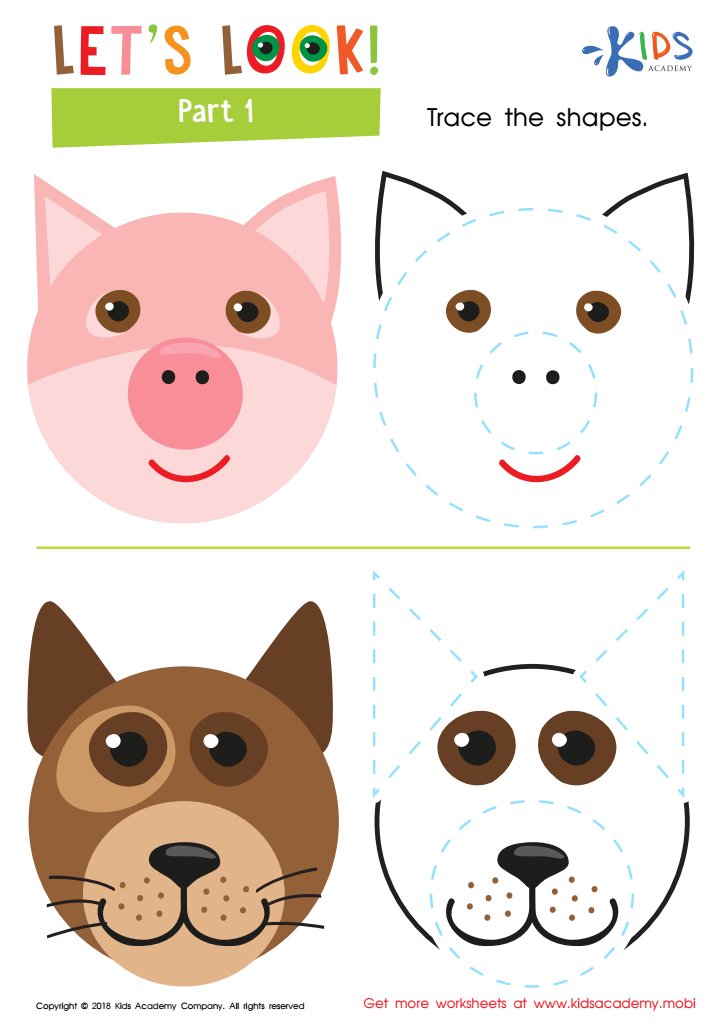Categorization skills Geometry Worksheets for Ages 5-8
6 filtered results
-
From - To
Enhance your child’s understanding of geometry with our engaging Categorization Skills Geometry Worksheets, specifically designed for ages 5-8. These worksheets provide a fun and interactive way for young learners to identify, classify, and categorize various geometric shapes and figures. By sorting shapes based on attributes such as size, color, and type, children will develop critical thinking and organizational skills. Each worksheet is crafted to reinforce foundational geometry concepts while keeping learning enjoyable. With colorful visuals and age-appropriate activities, your child will gain confidence in their geometry skills. Explore our collection today to ignite your child's love for math and learning!


Sorting Jewels Worksheet


Sorting Shapes - Part 3 Worksheet


Dinner Shapes: Making a Whole Worksheet


Sorting Shapes Worksheet


Shape Sorter Worksheet


Let's Look! Part 1 Worksheet
Categorization skills in geometry are vital for children aged 5-8 as they lay the foundation for critical thinking and problem-solving abilities. At this stage of development, children's brains are highly receptive to learning about shapes, sizes, and spatial relationships. Understanding geometric concepts helps them recognize similarities and differences among objects, which enhances their cognitive development.
By fostering categorization skills, parents and teachers equip children with the ability to group shapes based on attributes like color, size, and shape. This skill not only aids in mathematics but also enhances literacy, as children learn to distinguish between sounds and letters, setting the stage for reading and writing proficiency. Furthermore, these skills promote creative thinking and innovation, as children learn to visualize and manipulate objects in their minds.
Moreover, developing an understanding of geometry encourages children to observe their surroundings thoughtfully. They begin to see and categorize geometrical shapes in everyday objects and architecture, building a deeper appreciation for the environment. Emphasizing categorization in geometry during these early formative years is crucial for shaping well-rounded, analytical thinkers who will thrive in more complex mathematical concepts in the future. Thereby, investing in these skills is an investment in a child’s lifelong learning journey.
 Assign to My Students
Assign to My Students































